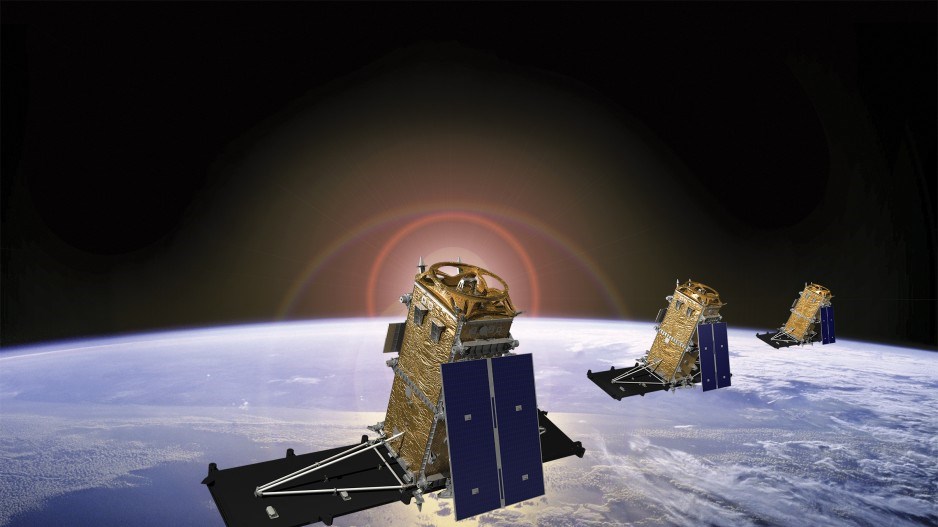A Canadian company that uses satellites to detect methane leaks from space will begin measuring methane emissions in B.C.’s northeast gas fields in 2020, thanks in part to $3.3 million in federal funding.
Sustainable Development Technology Canada (SDTC) will contribute $3.3 million towards a $9.8 million project. The rest of the financing will come from GHGSat, which last year raised US$10 million in series A financing.
GHGSat will be working on a “tiered” approach that uses both satellites and aircraft mounted with sensors – developed by GHGSat – to pinpoint methane emissions in the Montney gas play in northeastern B.C.
“These funds will allow GHGSat to demonstrate to regulators that our technology can offer accurate and more frequent measurements, enabling industrial operators to identify and repair leaks faster, all for lower cost than conventional methods,” GHGSat CEO Stéphane Germain said in a news release.
The methane produced in natural gas production can be a problem, from a greenhouse gas standpoint.
Although natural gas produces 50% to 60% less CO2 than coal, when burned to produce power, methane leaks – often in the form of fugitive emissions – could conceivably cancel out any gains.
The problem with methane is that it can be difficult to quantify. There are natural sources of methane, and determining just how much is coming from fossil fuel production can be a challenge.
And until regulators have better baseline data on methane emissions from the natural gas industry, it may be difficult to measure the success of government targets of reducing methane emissions by 45%.
Better measurements and monitoring are therefore key to quantifying just how much methane may be produced by a given well, pipeline or natural gas processing plant.
“GHGSat understands the need for globally standardized technology to quantify GHG emissions from industrialized facilities,” said Zoe Kolbuc, vice-president, partnerships, for SDTC.
“Their innovative satellites can reduce monitoring costs in the oil sands by over 50%. More frequent and accurate reporting better informs the industry on where and how to reduce GHG emissions.”




